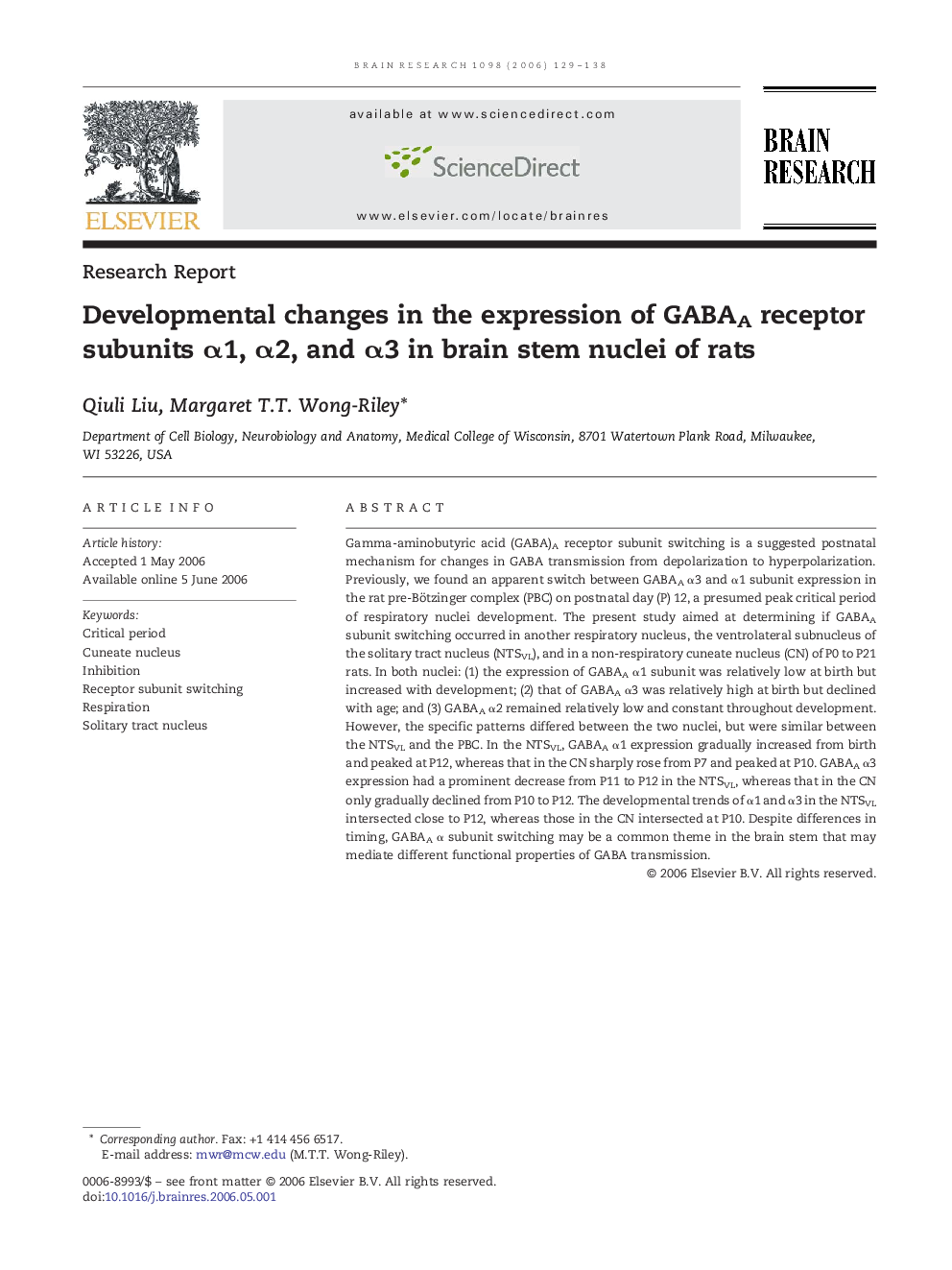| Article ID | Journal | Published Year | Pages | File Type |
|---|---|---|---|---|
| 4332661 | Brain Research | 2006 | 10 Pages |
Gamma-aminobutyric acid (GABA)A receptor subunit switching is a suggested postnatal mechanism for changes in GABA transmission from depolarization to hyperpolarization. Previously, we found an apparent switch between GABAA α3 and α1 subunit expression in the rat pre-Bötzinger complex (PBC) on postnatal day (P) 12, a presumed peak critical period of respiratory nuclei development. The present study aimed at determining if GABAA subunit switching occurred in another respiratory nucleus, the ventrolateral subnucleus of the solitary tract nucleus (NTSVL), and in a non-respiratory cuneate nucleus (CN) of P0 to P21 rats. In both nuclei: (1) the expression of GABAA α1 subunit was relatively low at birth but increased with development; (2) that of GABAA α3 was relatively high at birth but declined with age; and (3) GABAA α2 remained relatively low and constant throughout development. However, the specific patterns differed between the two nuclei, but were similar between the NTSVL and the PBC. In the NTSVL, GABAA α1 expression gradually increased from birth and peaked at P12, whereas that in the CN sharply rose from P7 and peaked at P10. GABAA α3 expression had a prominent decrease from P11 to P12 in the NTSVL, whereas that in the CN only gradually declined from P10 to P12. The developmental trends of α1 and α3 in the NTSVL intersected close to P12, whereas those in the CN intersected at P10. Despite differences in timing, GABAA α subunit switching may be a common theme in the brain stem that may mediate different functional properties of GABA transmission.
